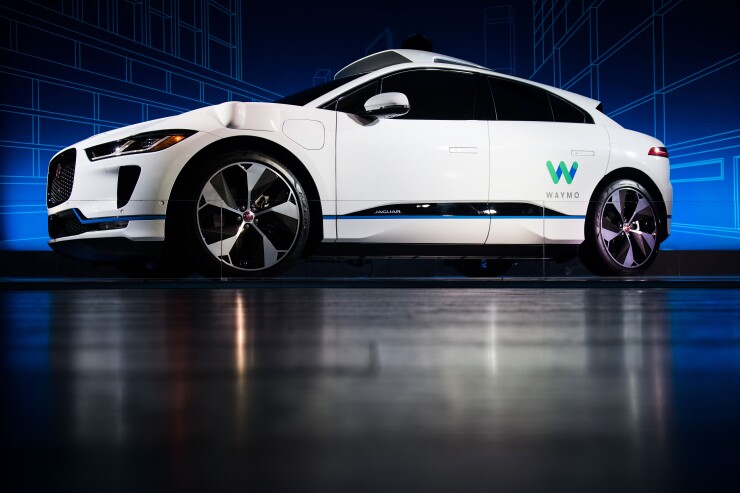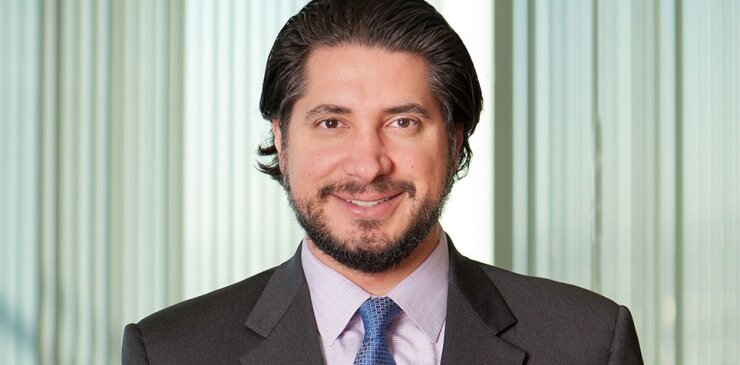LOS ANGELES — Evolving technologies — particularly the promise of driverless cars — raise questions about how California and its cities should solve their transportation problems.
If autonomous cars are on the horizon does the Los Angeles Metropolitan Transportation Authority need to continue to build its light rail and rapid bus transit networks? Would a dedicated autonomous-car highway between San Francisco and Los Angeles be a better solution than continuing to build a California high-speed rail system? Could parking garages be converted to housing?

Or are these tech utopian fantasies that distract Californians from the less glamorous infrastructure tasks at hand?
Transportation consultants and think tanks are trying to help state and city planners figure out how to plan for the future and answer such questions.
Melissa Ruhl, a transportation planner with ARUP, a multinational engineering, design and planning consultancy, said over the last two years she has watched conversations around the concept change from “That is just science fiction” to “How should we be planning for this?”
In the past, the engineers would say ‘it’s totally possible and we are getting there,” and then the planners would become frustrated with the forward thinking, because there are so many "real, deep problems" they are dealing with today, Ruhl said.
That dynamic has changed to one where everyone is saying if they don’t prepare for this technology, states and cities could have to reinvest in projects they could have done differently, Ruhl said.
Los Angeles had no rail transit in 1989. Now, the region has a 105-mile network and the Los Angeles County Metropolitan Transportation Authority is building more.
Will driverless cars negate that investment?
Autonomous cars aren't considered a disruptive factor to L.A. Metro’s plans, because the problem in Los Angeles is the land mass does not exist to build more roads, said Chief Innovation Officer Joshua Schank.
L.A. Metro’s recently released 2028 long-range plan is focused on high-capacity rapid transit solutions like dedicated bus lanes and projects that lengthen bus lines, according to Schank.
“Until we have floating cars, we need more high-capacity, rapid transit solutions, and that is an entirely different conversation — because we aren’t there yet,” Schank said. “We aren’t even to the point we have driverless vehicles yet.”
A white paper published by Arup and the San Francisco area's Metropolitan Transportation Commission
“The white paper was an investigation into the implications of driverless vehicles,” Ruhl said.
Car-centric Los Angeles has spent the past 20 years trying to catch up to cities like San Francisco, New York and Chicago that have robust mass transit systems.
California's state government has been struggling to build high-speed rail to connect San Francisco and Los Angeles.
Rudy Salo, a Nixon Peabody partner, suggested that consideration should be given to scrapping that project in favor of a dedicated roadway for driverless cars. Salo is a member of Nixon Peabody's Autonomous Vehicles Initiative.
A March
L.A. Metro's rail and rapid bus expansion plans have been criticized because the system's overall ridership has been dropping.
No one has a great answer as to why. The widespread use of ride-sharing apps Lyft and Uber have been noted as factors, as have a drop in gas prices and the state’s move to allow undocumented workers to obtain driver’s licenses.
L.A. Metro conducted a survey asking people why fewer people are riding mass transit. The response was that it's not convenient enough to serve their needs — and it doesn't go where they need it to fast enough, Schank said.
"The way to move it faster is to have dedicated rights-of-way for buses and mass transit," Schank said. "And we have to provide more rapid bus lines to more places in Los Angeles County — so that it is within a 10-minute walk for more people."
Ruhl says the potential disruptive factor inherent in driverless cars doesn’t mean an either-or equation when it comes to building dedicated roadways or mass transit. The state needs both.
It’s highly likely that driverless cars would result in more congestion, Ruhl said.
Safety regulations involving autonomous vehicles would require more following space between cars and have to slow more dramatically to provide a comfortable ride, which means more congestion, not less, Ruhl said.
Technology-driven ride-sharing services like Uber and Lyft have already added to congestion in major cities,

Uber, Lyft and Alphabet’s Waymo, an evolution of Google's self-driving car efforts, are among companies currently test-driving varying levels of autonomous cars.
Waymo began testing driverless cars without a safety driver in the driver’s seat in late 2017, though there is still an employee in the car. By February this year, Waymo said its test vehicles had logged 5 million miles traveling autonomously.
There have been setbacks. A Waymo vehicle was involved in a crash in Chandler, Arizona, in March. The same month an Uber autonomous vehicle was involved in an accident that killed a pedestrian in Arizona. Uber halted tests after the crash.
Even when the technology is there, the companies will have to overcome concerns about safety and the potential for hacking.
SAE International, formerly known as the Society of Automotive Engineers, published a classification system in 2014 based on different levels of automation ranging from fully manual to fully automated systems. It ranks the autonomous vehicles from levels one to five based on how autonomous the cars are, with five the highest.
Uber, Lyft and Waymo have tested cars that have reached levels three to five, said Salo.
Experts estimated it could be up to 20 years before fully autonomous vehicles — the level five that allows passengers to sleep in the back while the car drives itself — are available to the public.
The technology companies currently running tests on their cars are aiming for some kind of a ride-sharing program, like Uber and Lyft without drivers, Ruhl said.
“The possibility that we could buy and own an autonomous vehicle is decades away, because the technology of having a fully-mapped vehicle that could go anywhere and be fully developed is very far away,” she said.
That doesn’t mean transportation agencies aren’t planning for the day it’s a reality.
City transportation departments are working to figure it out, said Katherine Perez-Estolano, an Arup associate principal who specializes in transportation planning and public-private partnerships.
“I think we have some of the best people at the Los Angeles Department of Transportation thinking about a time when autonomous cars will be factor,” Perez-Estolano said.
She called the challenges multifold, adding that the stakeholders are not just municipalities, but also private property owners. “Anyone who has ownership of the road space, the curb space and the parking facilities needs to understand the implications,” she said. “I think it’s going to be a little messy until we rightsize things.”
Los Angeles, San Francisco, Pasadena and Long Beach are working on demonstration projects to try to understand the implications, Perez-Estolano said.
Funding is another key question if vehicles move toward autonomy, particularly if paired with electrification.
“Everyone recognizes that the gas tax has built the system we have,” she said. “It’s been the legs we stand on really.”
Autonomous vehicles are going to run on public infrastructure, so their owners and users need to help finance the system.
The Bay Area MTC's white paper looks at increasing tolls, or creating an expressway network with dedicated AV lanes, Ruhl said.
The gas tax may be part of the picture, but with increasing fuel efficiency and advances in electric vehicles other solutions need to be considered, she said. One idea being contemplated for AV cars is charging a “stacking fee,” at the curbs where the cars would stop to pick up passengers, she said.
Kate Bartolo of Kate Bartolo and Associates, a land-use development and public affairs consultant, cautions that enthusiasm for new technology needs to take into consideration its current state of development.
Salo in a recent Bond Buyer
But a driverless car is still a car.
"They still have to park it somewhere," Bartolo said.
"We need to be smart about the approaches to parking space sharing," Bartolo said. "But we also need to recognize that not all of our goals are going to be realized for 10 to 20 years."





